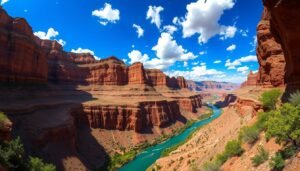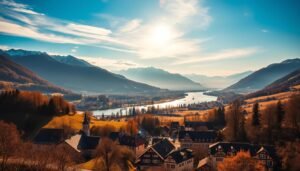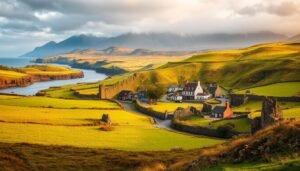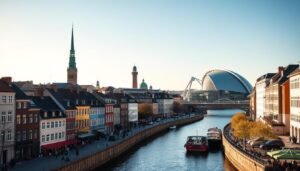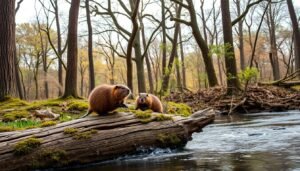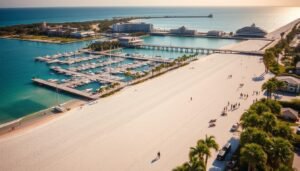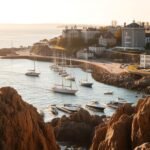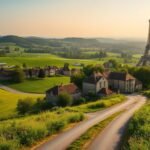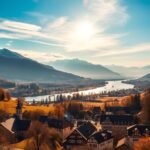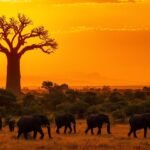Did you know the Great Barrier Reef spans about 2,300 km and hosts nearly 2,900 reefs? That scale shaped my slow, six-month approach across this vast country.
I set out in a campervan and found that sticking to Sydney and Melbourne misses so much. I explored coastal coves, national parks, wine regions, and tiny towns that felt like secrets.
What follows is a practical, on-the-ground list arranged by region and theme. I share how long to stay, how to link cities with nature escapes, and when to add an extra day for a hike or a dive.
This guide highlights Sydney’s harbor energy, Melbourne’s laneways, Uluru’s raw power, reef-meets-rainforest trips up the east coast, and quiet seaside towns that surprised me.
For a fuller bucket list and regional notes, see my detailed notes here: places-in-Australia bucket list.
Key Takeaways
- I traveled slowly for six months to map realistic trip clusters.
- Pair cities with nearby nature to save time and see more.
- Seasons are reversed—pack accordingly for southern-hemisphere weather.
- Highlights range from reef diving to billion-year-old gorges.
- This guide is a personal, practical list based on real time on the ground.
How I Planned My Australia Trip to Hit Iconic Cities, Beaches, Parks, and Hidden Gems
![]()
My six-month journey mixed longer city breaks with open-road days and quiet coastal stops. I spent time in New South Wales, Queensland, Victoria, Tasmania, and Western Australia, balancing urban stays with campervan legs.things-to-do-in-key-largo
I planned by grouping regions into logical loops — base weeks in Sydney and Melbourne, then a road segment up the east coast, and a dedicated loop for Tasmania. This cut backtracking and let me focus time where it mattered.
The campervan was the best way to reach small beaches, waterfalls, and trailheads. It gave me the freedom to change plans when weather or local advice nudged me toward better places.
Practical tips I used: block padding days for weather-sensitive activities, reserve busy campgrounds ahead, and combine trains with short car hires when needed.
- I mixed iconic destinations with quieter nearby spots for balance.
- I budgeted weeks, not days, so markets, trails, and winery lunches didn’t feel rushed.
- Check road conditions before long hauls and book reef trips a few days ahead.
The best places to visit in australia: My must-see icons and bucket-list stops

I chased sunrises, ferries, and coastal trails, letting each stop unfold at its own pace. This short list highlights iconic sights across the east coast and beyond that I lingered at for a reason.things-to-do-in-long-beach-ca
Sydney and the Sydney Opera House
I loved ferry rides to Manly and the warm glow of sunset from Circular Quay. The sydney opera house and Harbour Bridge are signature views you can pair with a Bondi coastal walk.
Melbourne
Melbourne’s laneways and coffee scene made slow mornings feel like an art. It’s also the perfect gateway for a drive along the Great Ocean Road.
Uluru-Kata Tjuta
Standing at Uluru at dawn felt like a true bucket list moment. The red rock shifts color fast; nearby Kata Tjuta adds sweeping domes for longer walks.
Great Barrier Reef and Whitsunday Islands
The great barrier reef Whitsunday islands, Whitehaven’s silica sand and clear water are unforgettable.
North and National Park highlights
The Daintree shows where reef meets rainforest, and Kakadu national park holds ancient rock art and wetlands alive with life. Slow travel here rewards the quiet moments and rare experiences.
“Pick one or two of these and do them deeply — each place reveals itself if you give it time.”
East Coast escapes I loved: Beaches, surf towns, and wildlife along the way
![]()
Along the east coast I found a string of lively surf towns, quiet coves, and wildlife pockets that felt endlessly different. I split time between sunrise hikes, lazy afternoons on sand, and short wildlife walks.things-to-do-in-budapest
Byron Bay, New South Wales: Lighthouse hikes, live music, and surf breaks
Byron Bay kept its famous surf vibe. I walked the lighthouse at dawn past Wategos Beach and stayed for live music that filled the evenings.
Tip: Go early for the lighthouse and avoid the mid-day crowds along the main beach.
Gold Coast, Queensland: Theme parks, nightlife, and quiet coves at Coolangatta
The Gold Coast blends big-energy theme parks and nightlife with calmer southern beaches like Coolangatta and Rainbow Bay. I split days between thrills and slow swims.
Noosa National Park: Coastal trails, near-perfect surf, and koala sightings
Noosa felt compact and easy to explore. I hiked coastal trails, watched surfers from headlands, and spotted koalas snoozing in the trees.
Bonus: The nearby Everglades are a rare and quiet ecosystem worth a half-day trip.
K’gari (Fraser Island): Sand tracks, lakes, and 75 Mile Beach adventures
K’gari is pure sand-island drama — long beach drives, Eli Creek floats, and the clear white shores of Lake McKenzie. I recommend a guided 4WD tour if you’re new to sand driving.
| Spot | Highlight | Ideal stay (days) | Why go |
|---|---|---|---|
| Byron Bay | Lighthouse + surf | 2–3 | Classic surf town, lively food scene |
| Gold Coast | Theme parks + Coolangatta coves | 1–3 | Mix of thrills and quiet beaches |
| Noosa | Coastal trails + koalas | 2–3 | Wildlife, easy hikes, gentle surf |
| K’gari | 75 Mile Beach + lakes | 1–2 | Island driving, pristine sand lakes |
- If your days are tight, split nights between Byron and Noosa for different coastal flavors.
- K’gari is best with a guide; sand driving is tricky on your own.
- For deeper east coast notes and routes, see my trip overview on east coast Australia.
Tasmania highlights: Wild coasts, white sand, and quiet nights under the stars
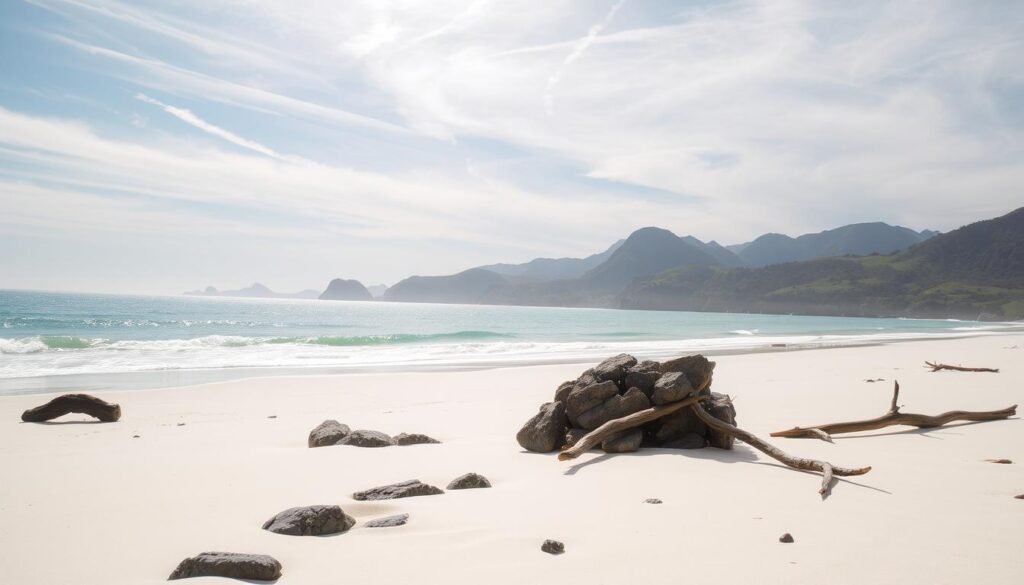
I found Tasmania’s eastern shore filled with dramatic rock, empty white sand, and slow road days. The island’s light feels different and the pace invites lingering.
Freycinet National Park on the east coast is all about the Wineglass Bay lookout and long Hazards Beach walks. I hiked early for clear views and then wandered Friendly Beach where you can almost have the sand to yourself.things-to-do-in-gainesville-fl
Freycinet viewpoints and beach loops
Tip: Pack layers; weather flips fast even in summer. Trails range from short lookouts to full beach loops, and camps are peaceful.
Bay of Fires: color and solitude
The Bay of Fires felt like a private paradise. Orange lichen on boulders, white sand that squeaks, and turquoise water made every walk feel unreal. I shucked fresh oysters by the shore and camped under a sky with no light pollution.
Hobart as a base
Hobart surprised me with big culture in a small city. Salamanca markets, Battery Point charm, and a visit to MONA slot perfectly between coastal day trips and food stops along the waterfront.
- If you have limited days: prioritize Wineglass Bay and Bay of Fires, then linger at one cove into late afternoon.
- Road trips: plan early starts for car parks and enjoy slow evenings sampling local food and cool-climate wines.
“Tasmania is a different world of wild coasts and gentle towns — a place to slow down and breathe salt air.”
Western Australia wonders that blew me away
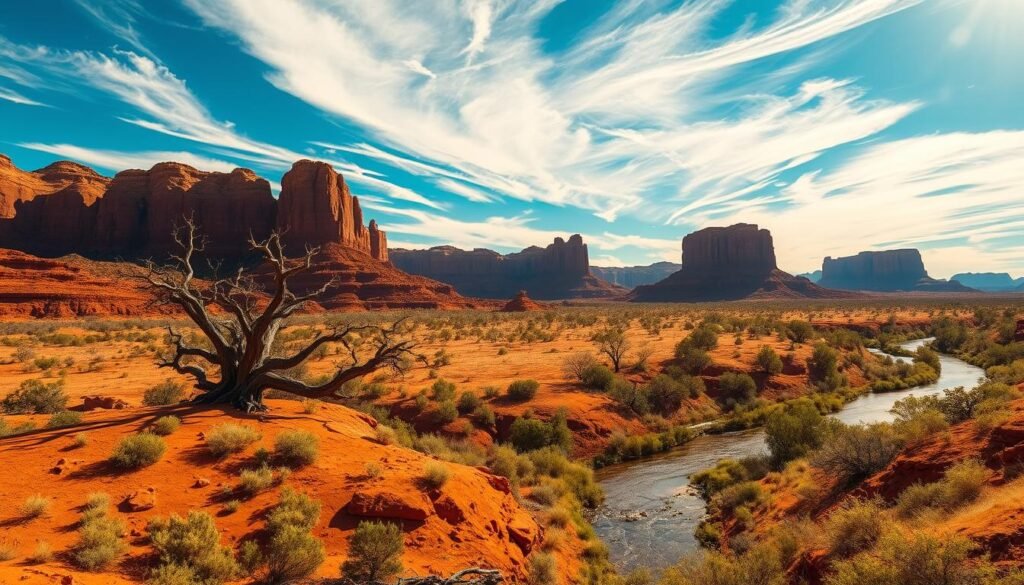
The west felt like a series of mood shifts: cool forests, sunlit bays, and ancient gorges.
Margaret River: world-class wineries, surf, and forested drives
I spent a few unhurried days around Margaret River, sampling more than 150 small producers, breweries, and gourmet stalls.
The mix of cellar doors and nearby surf made afternoons easy to fill with a forest walk and a late coastal swim.
Rottnest Island: quokkas, bikes, and crystal-clear bays
Rottnest island — often called Rotto — is an easy day trip from Perth.
With over 60 beaches and bays I rode a bike between lookouts, snorkeled clear water, and laughed at the friendly quokkas.
The powdery sand and calm coves felt like one best day escape.
Broome and the Kimberley edge: Cable Beach sunsets and red-earth contrasts
Broome gave me some of my favorite sunsets.
Cable Beach’s long shoreline frames the red earth against the Indian Ocean, and the town’s relaxed rhythm is a perfect reset during long drives.things-to-do-in-boise-idaho
Karijini National Park: slot gorges, waterfalls, and billion-year rock
Karijini National Park spans over 627,000 hectares of spinetingling gorges and deep pools.
Hiking narrow slot gorges and slipping into a cool swimming hole felt both ancient and joyful.
I stuck to marked trails and started early to beat the heat and have time for lingering swims.
- I found Margaret River is a place where great wine meets wild coast; plan slow afternoons for tastings and sunsets.
- On Rottnest island, pick leeward bays when wind picks up and bring a mask for quick snorkels between rides.
- Karijini National Park rewards time and patience—add an extra day if you can.
“Give Western Australia time; distances are vast but the rewards—wine, sand, gorges—are worth lingering for.”
New South Wales beyond Sydney: Mountains, markets, and river days

A short road out of Sydney led me to airy lookouts and market mornings in quiet valleys.
I based myself in Katoomba to hit classic Blue Mountains viewpoints and ride the glass-floor cable car across a gorge. From there I hiked cliffside tracks, watched waterfalls drop through tree-covered ridges, and felt like I’d stepped into another world.
Blue Mountains and Katoomba: Epic lookouts, gondolas, and cliffside trails
The Blue Mountains are a quick escape but they feel miles away. I chose lookouts with late-afternoon light for photos and started early on quieter trails.
Trails and roads are well-marked, but phone signal can be spotty. I saved offline maps and packed extra water for longer hikes.
Bellingen: Bohemian markets, swimming holes, and nearby national parks
Bellingen felt like a creative town with a relaxed pulse. The monthly market brimmed with live music, artisanal food, and local art spilling onto grassy fields.
I drove backroads with the windows down, stopped at a river swimming hole when the light looked right, then hit a nearby beach about twenty minutes away. With a couple of days you can pair one big mountain hike with a market morning and a late afternoon at the shore.things-to-do-in-quebec-city
“This side of New South is all about small towns, viewpoints, and the kind of unplanned stops that stretch a short trip into something richer.”
- I checked visitor centers for current track advice before heading into the park.
- Bellingen’s creative scene makes a short stay easily stretch into a long weekend.
South Australia sips and seaside detours
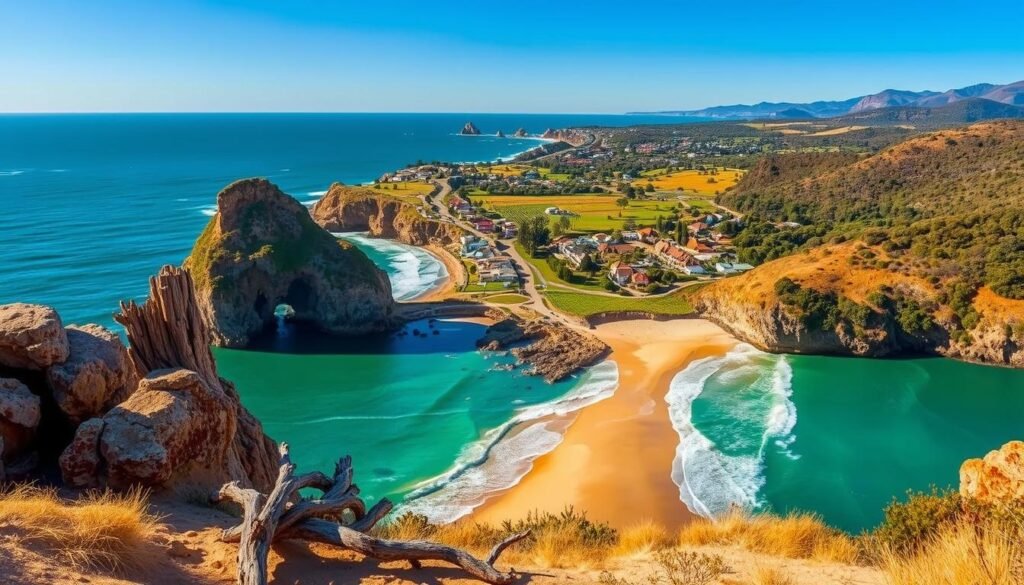
This region felt like two trips at once: gourmet valley lanes and wild shoreline escapes. I set aside a full day for the Barossa and another for the coast so each side had room to breathe.
Barossa Valley and Adelaide Hills: Cellar doors, scenic drives, and long lunches
The Barossa hosts over 80 cellar doors and roughly 150 wineries, from Penfolds and Jacob’s Creek to boutique producers. I lingered over long lunches and split tastings between iconic houses and smaller cellar doors tucked into rolling hills.
The 57-km Barossa Scenic Heritage Drive is a photogenic loop. I stopped for mid-morning pastries, vineyard views, and short walks that kept the day lively rather than rushed.
Adelaide Hills offered a cooler pace. Leafy roads, slower service, and staff who had plenty of time to talk vintages made it easy to learn while sipping.
Kangaroo Island: Wild coastlines, wildlife encounters, and quiet beaches
Kangaroo Island balanced the tasting days with raw coastline. I planned ferry times and driving distances so I could still catch a sunset after arrival.
The island served up windswept lookouts, quiet coves, and reliable wildlife sightings along the shore. For parks and coastal walks I checked visitor centers and stuck to signed tracks for safe encounters.
- I found this region shines when you mix food-forward afternoons with seaside detours.
- Towns feel unhurried, a welcome contrast after time in larger cities.
- For nearby coastal routes and extra tips, see the Fleurieu Peninsula roadie guide.
“South Australia surprised me with its blend of gourmet and wild—two destinations in one that felt like a mini-vacation inside the larger trip.”
When to go, how long to stay, and the easiest way to get around
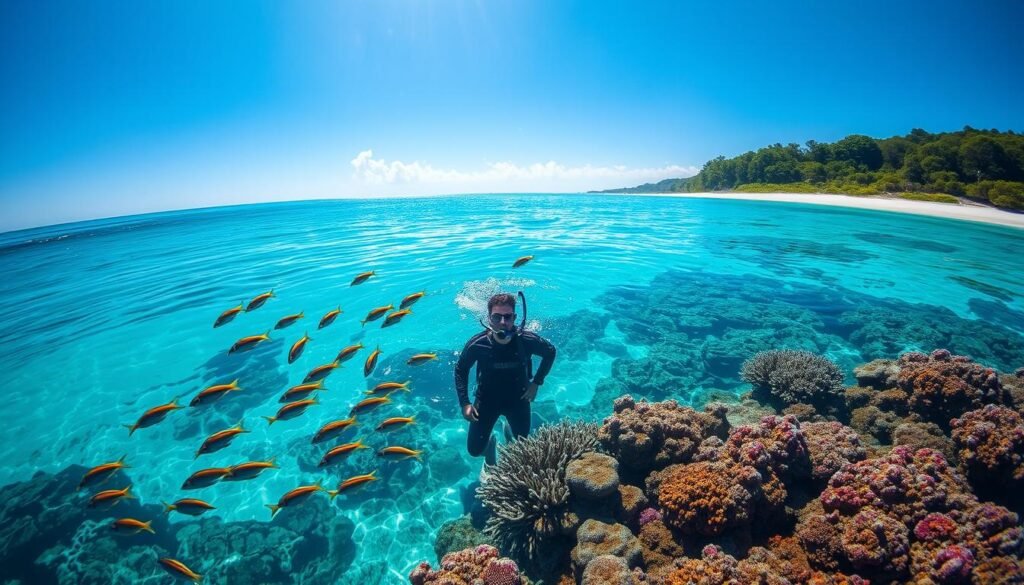
Timing shaped my entire plan more than I expected. Pick the right season and your days fill with clear water, calm trails, or cooler hiking weather.
Season by season
Summer in Tasmania meant long, sunny hikes and empty bays. I scheduled that part of the trip in southern summer for the best trail weather.
Winter in tropical Queensland felt like spring back home — drier, milder, and ideal for reef trips. For visibility on the Great Barrier Reef, I watched wind forecasts and chose calmer windows.
Remember: southern hemisphere seasons are reversed. Pack layers for southern nights even if you plan swims up north.things-to-do-in-cape-cod
Road trips and campervans
I found a campervan was the easiest way to link coastal towns and national park trailheads. It unlocked free camps, sunrise beach walks, and quiet detours cars on public transport can’t reach.
- Pro tip: cluster your east coast reef, Daintree, and Cape Tribulation stops into one segment to save time and cost.
- Give yourself buffer days between long drives — the country is big and the way to enjoy it is slow travel.
Wildlife smarts
Wild animals are unpredictable. I followed local signs, never fed wildlife, and kept distance from koalas.
Don’t swim in known crocodile habitats and avoid tall grass where snakes hide. For national park days I started early, carried extra water, and checked conditions with rangers.
Conclusion
What stayed with me were a few vivid scenes: reef colors at the Great Barrier Reef, dawn at Uluru, and long coast days on the east coast. These moments became anchors for the whole trip.
I recommend picking two or three anchor experiences—maybe Byron Bay mornings, a Gold Coast surf and a Margaret River afternoon—and building slow days around them. Add a day for the Whitsunday Islands or a hike in Tasmania if you can.
Travel lightly, leave space for detours, and you’ll come home with memories that outlast any list.






